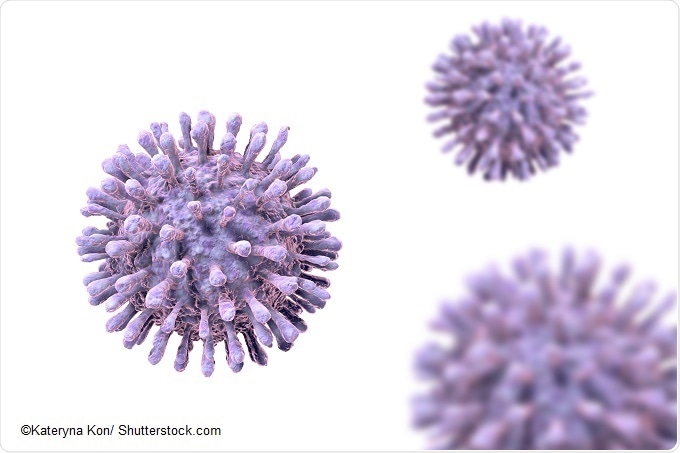May 4 2017
A new study published in the journal Molecular Therapy reveals that HIV DNA in the genome of living animals can be removed to eliminate further infection.
While a permanent cure for infection caused by HIV remains a challenge due to the ability of the virus to hide away in latent reservoirs. The study team comprising Wenhui Hu, Kamel Khalili, Laura H. Carnell, and Won-Bin Young carried out an experiment on three different animal models.

In one of their models—a humanized model—human immune cells were transplanted into mice and infected with the virus. This study group is the first to show that HIV-1 replication can be eliminated using CRISPR/Cas9, a powerful gene editing technology that eliminates the virus from the infected cells in animals.
In 2016, the research team published a study using transgenic rat and mouse models in which HIV-1 DNA was incorporated into the genome of every tissue in the animals. They proved that their approach could remove the targeted fragments of HIV-1 from most tissues in the animals used in the experiments. Based on this proof-of-concept study, they carried out the new study.
"Our new study is more comprehensive. We confirmed the data from our previous work and have improved the efficiency of our gene editing strategy. We also show that the strategy is effective in two additional mouse models, one representing acute infection in mouse cells and the other representing chronic, or latent, infection in human cells."
Wenhui Hu, MD, PhD, currently Associate Professor in the Center for Metabolic Disease Research and the Department of Pathology (previously in the Department of Neuroscience) Lewis Katz School of Medicine at Temple University (LKSOM)
In the new research, RNA expression of the viral genes was reduced by approximately 60—95% and HIV-1 was inactivated genetically in the transgenic mice, supporting earlier research results. The team extended their study to mice with acute EcoHIV infection, comparable with human HIV-1 and tested their system.
Dr. Khalili explained that HIV actively replicates during acute infection and with EcoHIV mice they were able to investigate the ability of the CRISPR/Cas9 strategy to block viral replication and potentially prevent systemic infection. Their strategy has reached a 96% excision efficiency in EcoHIV mice that provides the first proof for eliminating HIV-1 by prophylactic treatment using a CRISPR/Cas9 system.
The third model was experimented with a humanized mice engrafted with human immune cells, T cells, followed by infection of HIV-1 recapitulating latent HIV-1 infection in the animal. Dr. Hu explained that these animals carry latent HIV in the genomes of human T cells, where the virus can escape detection. The fragments of the virus in the latently infected human cells that was rooted in the tissues and organs of the mouse were successfully removed subsequent to a single treatment with CRISPR/Cas9 system.
The team made use of a recombinant adeno-associated viral (rAAV) vector delivery system based on subtype AAV-DJ/8 in all the three animal models. Dr. Hu mentioned that the AAV-DJ/8 subtype combines multiple serotypes and gives them a broader range of cell targets for the delivery of CRISPR/Cas9 system. The team also reengineered the previously used gene editing apparatus so that it could now carry a set of four guide RNAs and excise integrated HIV-1 DNA from the host cell genome efficiently and avoid potential HIV-1 mutational escape.
The study team calculated HIV-1 RNA levels and used a novel live bioluminescence imaging system to determine the success of the strategy. "The imaging system, developed by Dr. Young while at the University of Pittsburgh, pinpoints the spatial and temporal location of HIV-1-infected cells in the body, allowing us to observe HIV-1 replication in real-time and to essentially see HIV-1 reservoirs in latently infected cells and tissues," Dr. Khalili explained.
The study findings marked an important step to move ahead in the quest of a permanent cure for the infection caused by HIV.
The next stage would be to repeat the study in primates, a more suitable animal model where HIV infection induces disease, in order to further demonstrate elimination of HIV-1 DNA in latently infected T cells and other sanctuary sites for HIV-1, including brain cells."
-Kamel Khalili, PhD
He concluded that their ultimate objective is a clinical trial in human patients.
About the research team
The study was led by Wenhui Hu, MD, PhD, currently Associate Professor in the Center for Metabolic Disease Research and the Department of Pathology (previously in the Department of Neuroscience) at LKSOM; Kamel Khalili, PhD, Laura H. Carnell Professor and Chair of the Department of Neuroscience, Director of the Center for Neurovirology, and Director of the Comprehensive NeuroAIDS Center at LKSOM; and Won-Bin Young, PhD. Dr. Young was Assistant Professor in the Department of Radiology at the University of Pittsburgh School of Medicine at the time of the research. Dr. Young recently joined LKSOM.
Source:
https://www.eurekalert.org/pub_releases/2017-05/tuhs-ges050117.php